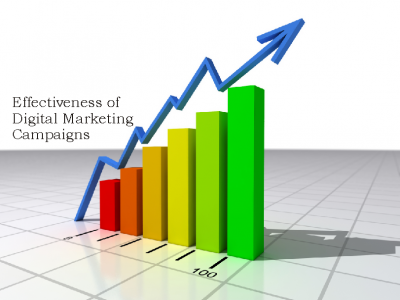Effectiveness of Digital Marketing Campaigns
- Home
- Effectiveness of Digital Marketing Campaigns

Effectiveness of Digital Marketing Campaigns
Mar 26 2021 SumOne India - Digital Marketing Advantages of Marketing. LimitationsDigital Marketing
Marketing
Online Marketing
Measuring the Effectiveness of Digital Marketing Campaigns
Although the ultimate criteria to evaluate any business initiative should be its return on investment. Or any other financial metrics in general. The evaluation criteria and metrics for the Effectiveness of Digital Marketing Campaigns can be discussed in more detail.
The criteria and metrics can be classified according to their type and time span. Regarding the type, we can either evaluate these campaigns “Quantitatively” or “Qualitatively”. Quantitative metrics may include “Sales Volume” and “Revenue Increase/Decrease”. While qualitative metrics may include the enhanced “Brand awareness, image, and health” as well as the “relationship with the customers”.
Shifting the focus to the time span, we may need to measure some “Interim Metrics”, which give us some insight during the journey itself. As well as we need to measure some “Final Metrics” at the end of the journey to inform us. If the overall initiative was successful or not. As an example, most social media metrics and indicators such as likes, shares, and engagement comments may be classified as interim metrics. While the final increase/decrease in sales volume is clearly from the final category.
The correlation between these categories should exist. Otherwise, a disappointing result may happen at the end in – spite of the illusion of success perceived early during the project.
Strategy Planning
Digital marketing planning is a term used in marketing management. It describes the first stage of forming a digital marketing strategy for the wider digital marketing system. The difference between digital and traditional marketing planning is that it uses digitally based communication tools and technology such as Social, Web, Mobile, Scannable Surface. Nevertheless, both are aligned with the vision, the mission of the company, and the overarching business strategy.
Stages of planning for the Effectiveness of Digital Marketing Campaigns
Using Dr. Dave Chaffey’s approach, digital marketing planning (DMP) has three main stages: Opportunity, Strategy, and Action. He suggests that any business looking to implement a successful digital marketing strategy must structure its plan by looking at opportunity, strategy, and action. This generic strategic approach often has phases of situation review, goal setting, strategy formulation, resource allocation, and monitoring.
1) Opportunity
To create an effective DMP. A business first needs to review the marketplace and set ‘SMART’ (Specific, Measurable, Actionable, Relevant, and Time-Bound) objectives. They can set SMART objectives by reviewing the current benchmarks. And key performance indicators (KPIs) of the company and competitors. It is pertinent that the analytics used for the KPIs be customized to the type, objectives, mission, and vision of the company.
Companies can scan for marketing and sales opportunities by reviewing their own outreach as well as influencer outreach. This means they have a competitive advantage because they are able to analyze their co-marketers influence and brand associations.
To seize the opportunity, the firm should summarize their current customers’ personas. And moreover, the purchase journey from this they are able to deduce their digital marketing capability. This means they need to form a clear picture of where they are currently and how many resources they can allocate for their digital marketing strategy i.e. labor, time, etc. By summarizing the purchase journey, they can also recognize gaps and growth for future marketing opportunities. That will either meet objectives or propose new objectives and increase profit.
2) Strategy
To create a planned digital strategy, the company must review its digital proposition (what you are offering to consumers) and communicate it using digital customer targeting techniques. So, they must define an online value proposition (OVP), which means the company must express clearly what they are offering customers online e.g. brand positioning.
The company should also (re)select target market segments and personas and define digital targeting approaches.
After doing this effectively, it is important to review the marketing mix for online options. The marketing mix comprises the 4Ps – Product, Price, Promotion, and Place.[65][66] Some academics have added three additional elements to the traditional 4Ps of marketing Process, Place, and Physical appearance making it 7Ps of marketing.
3) Action
The third and final stage requires the firm to set a budget and management systems; these must be measurable touchpoints, such as audience reached across all digital platforms. Furthermore, marketers must ensure the budget and management systems are integrating the paid, owned, and earned media of the company.[68] The Action and final stage of planning also require the company to set in place measurable content creation e.g. oral, visual, or written online media.
After confirming the digital marketing plan, a scheduled format of digital communications (e.g. Gantt Chart) should be encoded throughout the internal operations of the company. This ensures that all platforms used fall in line and complement each other for the succeeding stages of digital marketing strategy.
1 Comment
Books and More Web | Digital Marketing, Event Management, Wedding Planning firm March 26, 2021 at 7:45 pm
[…] Effectiveness of Digital Marketing Campaigns […]